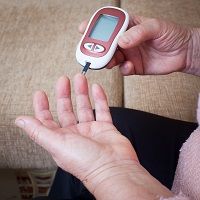Article
Patient-Driven Dose Regimen Outperforms Physician-Driven for T2D Patients
Author(s):
Patient-driven doses led to 67.5% of subjects reaching target HbA1C compared to 58.4% in the physician-driven arm.

Results from the TAKE CONTROL randomized trial showed that insulin glargine 300 units/mL (Toujeo, Sanofi), taken with a simple dose patient-driven titration regimen demonstrated better HbA1C control without increasing the risk of hypoglycemia in type 2 diabetes (T2D) patients than patients on a physician-driven titration regimen.
The trial had participants begin with insulin glargine 300 units/mL, or switch from other basal insulins (insulin glargine 100 units/mL, insulin detemir, and NPH) while continuing to take any other oral antidiabetic drugs (OADs). After 6 weeks, the patients using patient-driven titration saw HbA1C improvement over the physician-driven group (LS mean difference 0.13%, p=0.0247).
"The results of the TAKE CONTROL study demonstrate that patients can make a critical contribution to work toward their own effective blood sugar target when they are well trained and using a basal insulin such as Toujeo," Riccardo Perfetti, the vice president of medical affairs and DCV medical affairs at Sanofi, said in a statement.
In the patient-driven group, 67.5% reached the predefined blood glucose target, compared to 58.4% in the physician-driven group (RR 1.15 [1.02; 1.3], p=0.0187). At least one severe and/or confirmed hypoglycemic event was experienced by 6.4% of patient-driven subjects, and 6.3% of physician-driven subjects.
TAKE CONTROL, a 24-week study, included 631 patients with uncontrolled T2D — 62% of which were on basal insulin, 38% were insulin-naïve – with a mean age of 63 and mean duration of diabetes of 12 years. The patient-titration group was also favorable in the secondary endpoints of reaching the 80-130 mg/dL target of pre-defined fasting self-measured plasma glucose (SMPG), without experiencing hypoglycemia at week 24.
At least one episode of hypoglycemia was reported by 36.2% of patients in the patient-driven arm and 37% in the physician-driven arm. Severe incidence of hypoglycemia was reported in 0.6% of the patient-driven arm and 0.3% of the physician-drive arm.
Sanofi is in the process of conducting a Real-World comparative study of more than 200000 patients from the US and EU, with additional evidence expected to be published this year. Two retrospective studies, DELIVER 2 and DELIVER 3, have already been conducted and presented.
Thus far, the study indicates a positive future for patient-driven diabetes management. Full results of the TAKE CONTROL study are expected in 2018.
Related Coverage
Sotagliflozin Shows Superiority in T1D Treatment
Lixisenatide Combination Therapy Outperforms Single Treatment Option for T2D
Coronary Artery Bypass Preferable for T1D with Multivessel Disease




